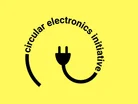Fighting E-Waste: Circular Electronics Drive Sustainability

Millions of electronic devices are discarded yearly due to breakage, obsolescence or sheer convenience. Such behaviour contributes to a growing crisis expected to produce 82 billion kilograms of e-waste globally by 2030.
E-waste, now the fastest-growing solid waste stream, poses serious threats to human health and the environment. It demonstrates the urgency of initiatives like Circular Electronics Day.
What is Circular Electronics Day?
Celebrated annually on January 24, Circular Electronics Day aims to raise awareness about the e-waste crisis while promoting sustainable practices. These include extending product lifespans, repairing devices, buying second-hand and recycling responsibly.
The initiative empowers businesses and consumers to take meaningful action against the environmental and social impacts of e-waste.
At the heart of Circular Electronics Day is the Circular Electronics Initiative, a global network of over 30 organisations led by TCO Development. The coalition inspires decision-makers, businesses, and consumers to embrace circular practices in managing electronic devices.
Andreas Nobell from TCO Development, a founding member of the initiative, explains: “From smartphones and laptops to countless other devices, electronics are integral to our daily lives. Yet, we often dispose of them long before necessary.
“Circular Electronics Day urges us to adopt smarter, more sustainable solutions to reduce waste and prolong the usage of our devices. Every small step counts.”
Understanding the e-waste impact
The environmental and social costs of e-waste are immense. When improperly disposed of, electronics release hazardous substances that harm ecosystems and human health.
Additionally, extracting raw materials for new devices often involves exploitative labour practices and significant carbon emissions.
Circular Electronics Day highlights the importance of reducing these impacts through more responsible production, usage and recycling of electronics.
Simple steps toward sustainability
In observance of Circular Electronics Day, the initiative highlights five actionable ways individuals and organisations can make their electronics habits more sustainable:
- Refuse and reuse: Ask if a new device is necessary before upgrading. Prolonging the use of existing electronics significantly reduces their environmental footprint.
- Care, repair and upgrade: Handle devices carefully to avoid damage and explore repair or upgrade options rather than immediate replacement. Extending a device’s lifespan even by one year can drastically cut its overall impact.
- Buy second-hand: The thriving second-hand market for electronics offers a sustainable alternative. Buying or selling pre-owned devices reduces waste and extends product lifecycles.
- Choose durable products: Invest in electronics designed for longevity. Look for devices with sustainability certifications and robust designs that support circular flows.
- Recycle responsibly: When devices end their life, ensure they are properly recycled. Use certified recycling programs or extended producer responsibility schemes to recover valuable materials and minimise harm.
Promoting global recycling initiatives
The Circular Electronics Initiative stresses the importance of supporting global e-waste recycling efforts. In many regions, electronic waste ends up in landfills due to inadequate recycling infrastructure, causing environmental harm and jeopardising local communities.
By backing programmes that promote proper collection and recycling in underserved areas, individuals and organisations can contribute to a more inclusive and effective approach to managing e-waste.
Circular Electronics Day reminds us that small changes can have big impacts in the fight against e-waste. By rethinking how we produce, use, and dispose of electronics, we can create a more sustainable digital world.
Whether opting for repair over replacement or supporting global recycling initiatives, everyone has a role to play in this critical movement toward circularity.
Make sure you check out the latest industry news and insights at Scope 3 Magazine and be part of the conversation at our global conference series, LIVE and Procurement & Supply Chain LIVE.
Discover all our upcoming events and secure your tickets today. Subscribe to the Scope 3 Magazine newsletter.
Scope 3 Magazine is a BizClik brand.
- The Evolving Role of Chief Sustainability OfficersScope 1 2 and 3
- Scope 3: Baltic States end Russian Energy DependenceSustainable Procurement
- Nissan Expands Green Steel to cut Scope 3 EmissionsSupply Chain Sustainability
- Evri & Protega Tackle Scope 3 via Sustainable PackagingTransportation & Logistics

